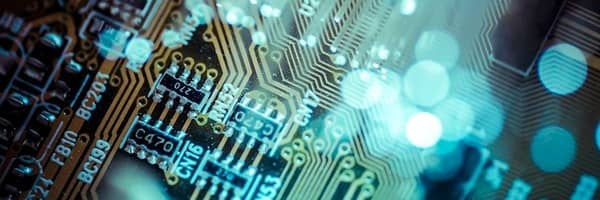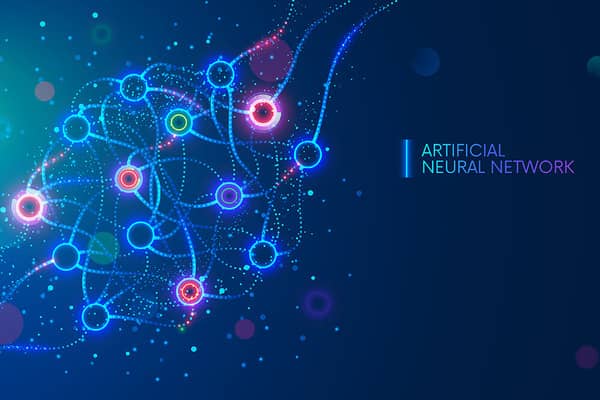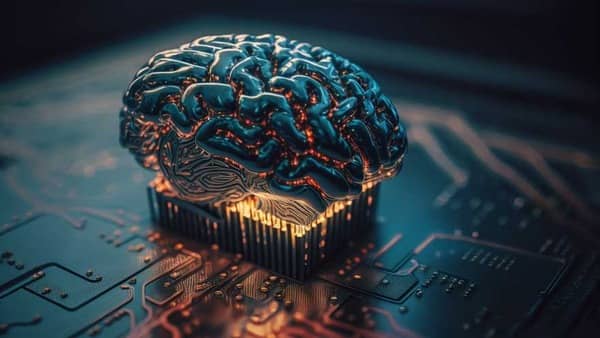
What Is RISC-V?
September 18, 2024
What Is a Data Processing Unit?
September 30, 2024On this Page…
- What Is the Basic Concept of Neuromorphic Computing?
- When Was the Idea of Neuromorphic Computing Introduced?
- How Can Neuromorphic Computing Work?
- The Difference between Neuromorphic Computing, AI, and Quantum Computing
- The Potential Advantages and Challenges of Neuromorphic Computing
- What Are the Advancements and Possible Applications of Neuromorphic Computing?
- The Future of Neuromorphic Computing
In the complex landscape of ever-evolving technology, traditional computing devices are showing their limitations to meet growing computational needs, especially in artificial intelligence. A pivot is happening, and one potential focus is now on an innovative field of neuromorphic computing, which attempts to replicate the biological neural networks present in our brains. This pivot focuses on not only software—it also focuses on creating neural networks through hardware. The concept might sound like science fiction, but it is very much grounded in cutting-edge research and development. By mirroring human cognition processes, neuromorphic computing carries the potential to introduce an entirely new age in technology, and potentially reshape our relationship with machines.

What Is the Basic Concept of Neuromorphic Computing?
The computing landscape we know is largely built on Von Neumann’s architecture, which features distinct units for data processing and memory. Neuromorphic computing, inspired by the human brain, seeks to revolutionize the current computing landscape dominated by Von Neumann’s architecture. This architecture causes speed and power inefficiencies due to separate data processing and memory units. This concept uses computer science to physics knowledge and aims to create dynamic and energy-efficient systems modeled after neurons and synapses within both software and hardware.
These computers strive to emulate the flexibility of human cognition, offering a robust and essentially fault-tolerant model capable of complex tasks such as pattern recognition and adaptive learning, which traditional systems often find challenging. Although still in development, the potential of neuromorphic computing is recognized widely, with research groups from universities to tech giants like Intel Labs and IBM engaged in its development.
Its anticipated applications extend to deep learning, advanced semiconductors, autonomous systems, and AI, potentially bypassing Moore’s Law limitations. This innovation, driven by the quest for Artificial General Intelligence or AGI, may provide deep insights into cognition and consciousness by replicating the brain’s intricate structures.
When Was the Idea of Neuromorphic Computing Introduced?
The birth of neuromorphic computing was started around the 1980s by Carver Mead at the California Institute of Technology. Mead taught a computational physics course with Richard Feynman and John Hopfield, who saw promise in analog silicon for making brain-inspired systems. His initial venture targeted sensory systems, producing retina and cochlea chips, and an address-event protocol for inter-chip communication.
The recent advancements and interest in artificial intelligence and machine learning technologies can potentially make neuromorphic computing a critical concept to explore further. The increased demand for computational efficiency and speed is also making this technology important now and in the future.

How Can Neuromorphic Computing Work?
Neuromorphic computing is designed to mimic the human brain using specific hardware. This approach includes a spiking neural network or SNN, where each “neuron” holds and processes data like our own brain cells. They connect through artificial synapses that transfer electrical signals in a way that mirrors brain function, encoding data changes rather than just binary values.
These neuromorphic systems differ greatly from traditional computers within Von Neumann’s architecture. Unlike traditional computers, where separate units process and store data, neuromorphic computing combines these functions. This sidesteps speed and energy issues tied to the von Neumann bottleneck.
Neuromorphic chips can handle multiple functions simultaneously across up to a million neurons. Their capacity to expand is only limited by adding more chips, while their energy use is optimized by only powering active neurons. They’re also highly adaptable and can adjust connections based on external stimuli.
In addition, neuromorphic computers are fault-tolerant. Like the human brain, they store information in multiple places, so if one part fails, the system still functions. Because of this, neuromorphic computing shows promise in potentially bridging the gap between biological brains and computers.

The Difference between Neuromorphic Computing, AI, and Quantum Computing
As the landscape of advanced computing continues to evolve, it’s crucial to understand the differences and relationships between neuromorphic computing, artificial intelligence, and quantum computing. Each field represents distinct methods and applications with strengths and weaknesses.
The primary focus of artificial intelligence is on developing machines capable of emulating human intelligence. This includes tasks ranging from pattern recognition to decision-making and problem-solving, all based on conventional computer architectures. While AI has seen extraordinary advancements, it’s still largely focused on software development.
Neuromorphic computing, on the other hand, takes a different approach. Instead of trying to create intelligent algorithms, it focuses on designing new types of hardware that can emulate the structure of the biological brain. While this could enhance AI by creating hardware that’s optimally suited for certain types of AI algorithms (such as neural networks), the potential applications of neuromorphic computing also extend far beyond AI.
Quantum computing represents an entirely different field. It uses the principles of quantum mechanics—superposition and entanglement—to process information. While quantum computing offers the potential for vastly increased processing power, it is also still in its beginning stages and faces significant challenges, particularly regarding qubit stability. All of these fields of computing technology will be important for the overall field of technology.
The Potential Advantages and Challenges of Neuromorphic Computing
Neuromorphic computing offers several potential advantages over traditional computing. It can significantly reduce energy consumption since data no longer needs to be moved back and forth between separate processing and storage units. This energy efficiency can potentially make neuromorphic systems more suited for use in mobile devices and other battery-operated technology. It can emulate the parallel processing capabilities of the human brain, which could greatly enhance computing speed, opening the door to real-time processing and analysis of large-scale data.
As with any innovative technology, the road to fully realizing neuromorphic computing’s potential is full of challenges. One substantial obstacle is the difficulty of simulating biological neurons’ built-in variability and randomness using silicon chips. Another important thing to realize is that our understanding of how the human brain actually learns and retains information is still incomplete, adding another layer of difficulty to designing chips that can successfully mimic these processes.

What Are the Advancements and Possible Applications of Neuromorphic Computing?
Neuromorphic computing is an ambitious pursuit to imitate the complexity of the human brain. It can revolutionize technology by integrating processing and memory on a single chip. This departure from the traditional separation of these functionalities calls for deep-seated innovation in design, materials, and components.
This technology is even more intriguing with breakthroughs such as IBM’s TrueNorth, Intel’s Loihi, and BrainScales-2. These neuromorphic systems have exhibited superior efficiency compared to traditional computers, particularly in executing complex tasks like pattern recognition and decision-making.
Researchers have developed the polymer synaptic transistor to transcend the binary logic of standard transistors. This device encodes data within signal modulations. The realm of exploration further extends to components like memristors, capacitors, spintronic devices, and even fungi for creating brain-like architectures.
A significant stride in neuromorphic hardware advancement comes with including memristor components. These devices, which control current flow and retain a charge even without power, facilitate simultaneous information processing and storage, serving as the much-needed fuel for AI’s computational requirements. By enabling brain-inspired processing, memristors and neuromorphic computing enhance both performance and energy efficiency, marking it a potential turning point for AI.
Neuromorphic computing has vast applications, encompassing everything from energy-efficient robotics to real-time data processing in autonomous vehicles. Perhaps the most impactful application lies in creating advanced AI systems capable of real-time learning, which could transform industries such as healthcare, finance, and security.

The Future of Neuromorphic Computing
Although neuromorphic computing is still in its early stages, it is a field full of potential. As researchers continue to unravel the secrets of the human brain and refine silicon-based technologies, we can expect neuromorphic computing to play an increasingly prominent role in our technological future.
Neuromorphic computing represents not just a novel concept but a radical alternative computing approach that can potentially disrupt and revolutionize our technological landscape. We are at the beginning of this computing revolution, which can help us develop faster, more efficient computers but also help us gain invaluable insights into one of the most complex and least-understood structures in the universe—the human brain.

